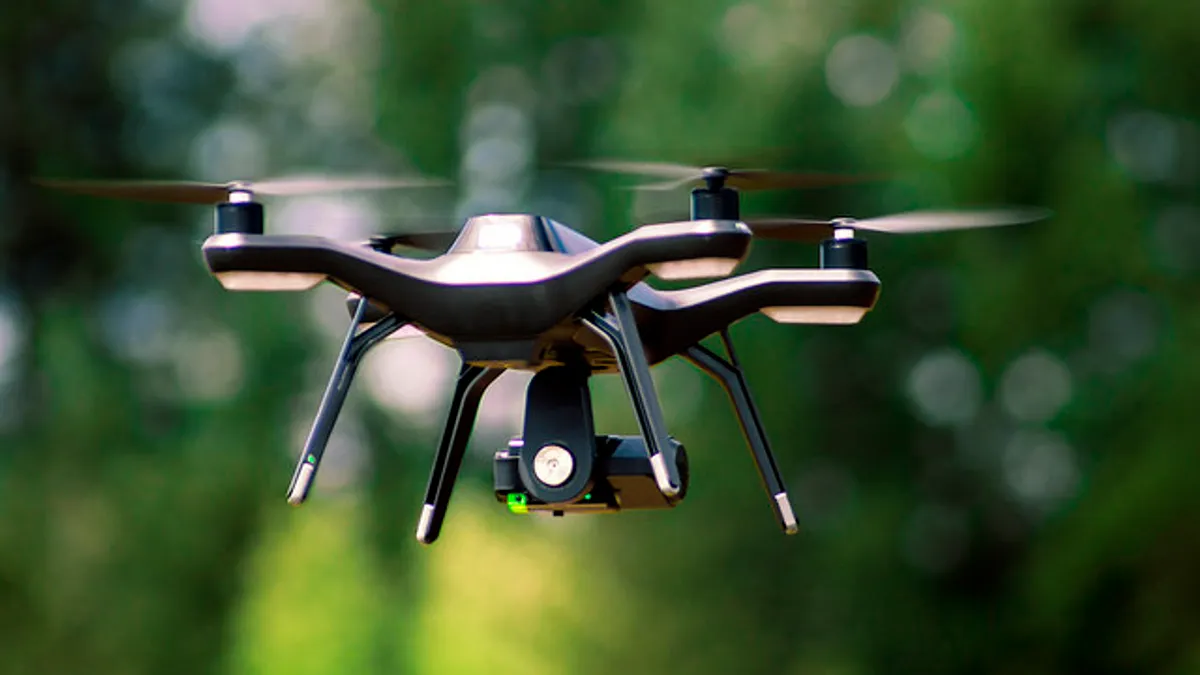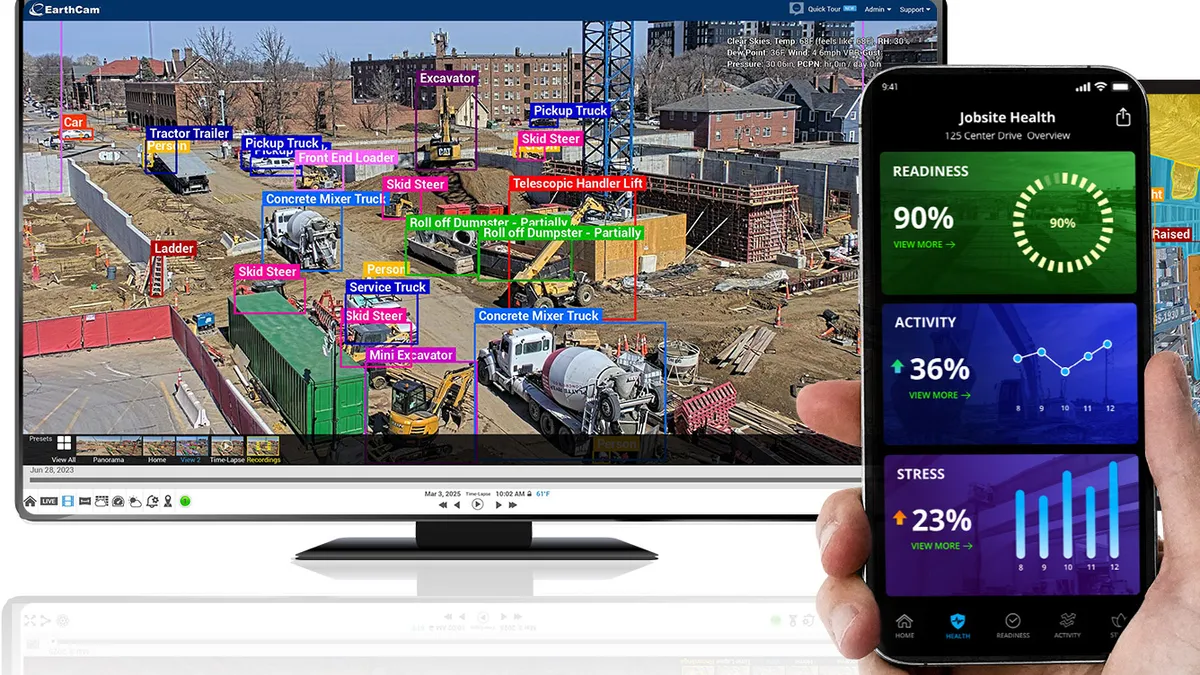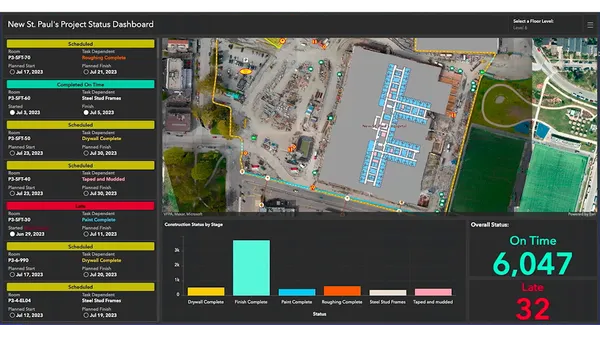The following is a guest post from Mark A. Dombroff, a member of corporate law firm LeClairRyan and co-founder of its aviation industry practice.
For good reason, drones are a big topic in construction. They promise to ramp up the speed and efficiency of surveys, inspections, mapping, monitoring, security and other tasks, and can help the industry make progress on an even more critical front as well — workplace safety.
As OSHA statistics make clear, falls continue to be a concern in the construction sector: Of the 971 deaths on construction sites in 2017, falls were implicated in 381. Drones stand to save lives by eliminating the need for in-person inspections in high or otherwise dangerous places.
But as contractors, subs and other stakeholders embrace on-site use of unmanned aerial systems (UAS), they should pay close attention to the safety and liability risks that can be associated with this technology as well. Given that a backhoe loader can have a max operating weight of 25,000 pounds, some construction pros might dismiss the dangers of a 13-ounce quadcopter made of plastic and carbon fiber. Nonetheless, those risks are real.
Statistically speaking, a higher volume of UAS flights over construction sites inevitably translates into greater risk of accidents and regulatory violations. The industry has already seen at least one crash involving a drone flying over a construction site. In 2018, a survey pilot in the United Kingdom reportedly flew a 3D Robotics Solo drone into a crane.
Harder-to-anticipate events also become more likely as the number of flights increases. In March, a man in Forest Park, Georgia, was electrocuted after trying to use a metal pole to dislodge a drone from a tree. It is not difficult to imagine a similar tragedy occurring at a construction site where a drone could snag on exposed rebar or end up in some other hazardous spot.
You might think a lightweight photography drone has little chance of hurting someone, but consider the case of Philadelphia Indemnity Insurance Company v. Hollycal Production, Inc. et al. Filed in April 2018, the federal court dispute hinges on an incident in which a photography drone partially blinded a bystander at a wedding. According to court filings, the pilot either flew the drone at eye level into the bystander or the bystander walked into the drone. While the production company had a $1 million liability insurance policy, its insurance provider rejected the claim. Drones, it argued, are federally regulated as aircraft, and the policy in question included commonplace provisions that exclude coverage for aircraft- or aviation-related injuries. A federal judge sided with the insurance provider late last year.
The bottom line here is that accidents happen. For the construction business, with its tight controls on site access and safety-first approaches to heights, debris, trenches, gas and electric lines and the like, that is nothing new. The ubiquity of drones, though, means that controlling what happens above construction sites is now a risk-management imperative as well.
Achieving this goal requires a dual focus. First, general contractors and those who hire them need to closely scrutinize and seek to mitigate all potential risks posed by sanctioned, formally commissioned operation of UAS on site. Second, they should put in place a safety protocol designed to prevent any casual, unanticipated flights of drones — whether operated by subcontractors or other parties — over the jobsite.
Operator qualifications, contracts and insurance
Legitimate commercial operators of UAS appreciate the necessity of following FAA regulations to the letter. They have studied weight and altitude limits, airspace restrictions around airports, drone registration requirements, waivers and more. These companies are unlikely to, say, employ unlicensed pilots or recklessly buzz construction workers standing on scaffolds or ladders.
However, when construction companies hire drone vendors or their own in-house pilots, they need to ask hard questions and look beyond minimum thresholds. Mere compliance with Part 107 of federal regulations is not enough. U.S. airlines do not limit themselves merely to operating at minimum standards; rather, they go above and beyond when it comes to safety. Drone pilots and service providers should demonstrate a thoughtful commitment to doing the same thing.
Look for pilots and firms with solid training programs and thorough, fully documented approaches to maximizing flight safety in construction contexts. These days, startups abound, and “be a drone pilot” ads are all over the internet. Avoid hiring pilots who would essentially be learning on the job over your construction site.
Naturally, your risk-management team should closely scrutinize the insurance policies carried by any UAS service providers. Make sure the company is fully indemnified and that the applicable policies contain no provisions that could lead to liability risk. For example, if the policy limits coverage to aviation-related accidents that occur on or over the site, what will happen if a pilot loses control of that drone and it flies off site and right into the windshield of an 18-wheeler speeding down the highway? Make sure you have full protection, even for seemingly unlikely contingencies.
Guarding against ‘casual use’ of drones at jobsites
Search for “drone” on Amazon and you will see more than 60,000 results with prices ranging anywhere from $50 to $21,000. As this technology becomes ubiquitous, it is bound to show up more frequently at construction sites as well. That means GCs and those who hire them need to stay vigilant about the risks posed by casual, perhaps unanticipated, use of drones by subcontractors, marketing firms, real estate brokers or other parties.
Consider the following scenario. The GC hires a subcontractor to roof a 1 million-square-foot industrial building. The head of the subcontracting firm happens to be a drone hobbyist who keeps a DJI Spark quadcopter in his pickup truck. On a whim, he flies the drone over the roof to take some video for his Facebook page and it distracts a fascinated bulldozer operator, who promptly hits someone.
Companies should do all they can to make sure all parties understand that drones should not be flown on site without explicit, written permission and understood terms. Bear in mind that many Americans — including, no doubt, some who work in construction —continue to think of drones as harmless toys, not as aircraft regulated by the FAA.
Contractors should consider getting assurances in writing from their subs and other parties that they will not fly drones on site without a formal agreement. GCs need to talk to their subs about drone use and query them about their plans. The goal is not to discourage beneficial drone use but to maximize safety, mitigate liability risk and guarantee full regulatory compliance when drones are used.
New rules on the horizon
A final consideration is the need to closely track and even shape new UAS rules on the horizon. Ordered by Congress to speed up the integration of drones into national airspace, regulators are now seeking industry feedback on sweeping rule changes that stand to affect every part of the American drone industry. General contractors, service providers and other construction stakeholders should make their voices heard about these proposals.
They include potential overhauls of the FAA’s “flight over people” rule; ideas for new safety-related design, performance and payload requirements; newly proposed procedures on night flight and waivers; and a raft of other regulatory considerations. If FAA moves forward with the wrong approaches to, say, flying beyond the visual line of sight or maintaining new minimum distances from people or structures, the implications for construction could be enormous. The time is now to study these proposals, huddle with peers and let regulators know what will work for the industry.
The benefits of drone technology — everything from eliminating costly helicopter flights, to literally saving lives through improvements in safety — are hard to overstate. By taking a careful approach to managing the associated risks, the construction industry stands to see those benefits soar even higher in the years to come.




















